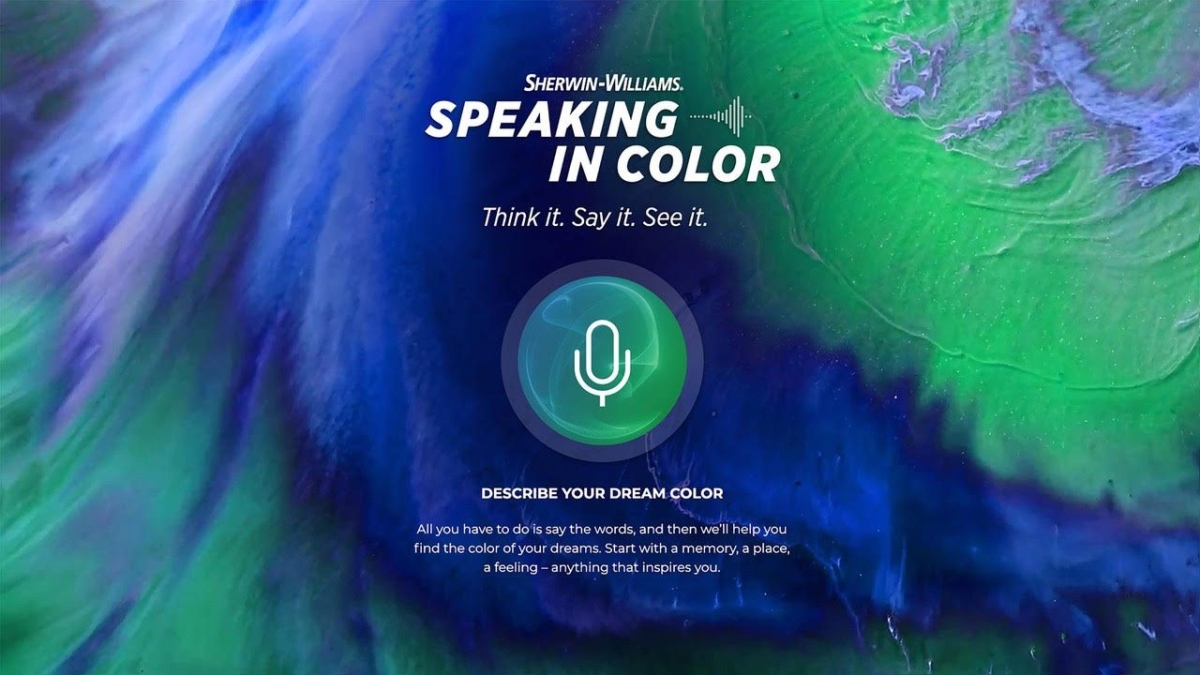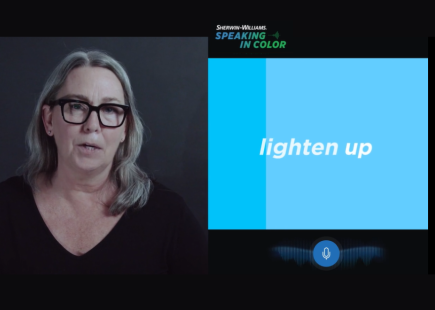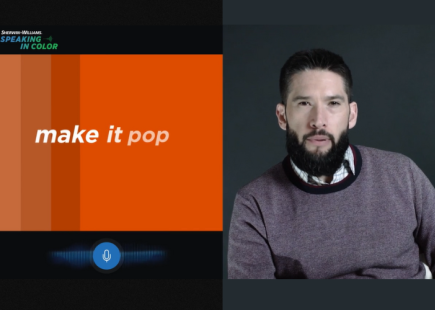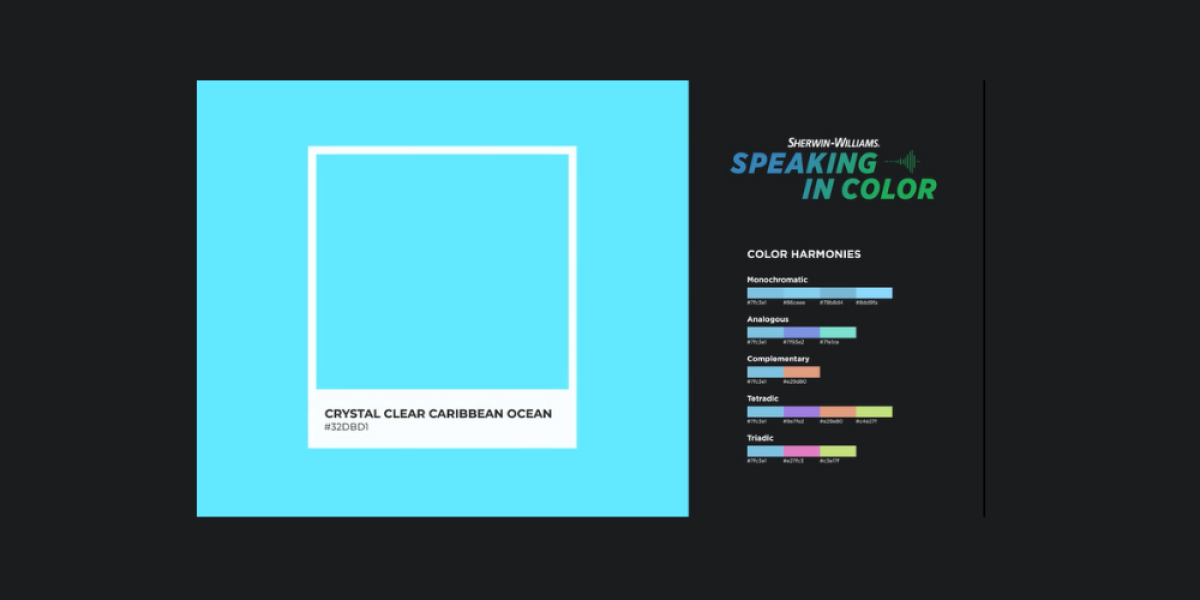Meet The Maker: Wunderman Thompson's Bas Korsten and Daniel Bonner present 'Speaking In Color'

Creating colour from human inspiration.
Bas Korsten and Daniel Bonner are global chief creative officers at Wunderman Thompson, part of WPP Group.
They are also winners of the inaugural Creative B2B Grand Prix at Cannes Lions International Festival of Creativity 2022 for their work with Sherwin-Williams Coil Coatings—'Speaking in Color'.
‘Speaking in Color’ is an AI, voice-controlled tool that produces colours based on human inspiration.
Not only this, it provides insights in to cultural and geographical influences, creating the largest data set of colour attribution in the world.
Launched exclusively for architects and visionaries, Sherwin-Williams and Wunderman Thompson enabled architects to turn a memory or vision into their perfect colour.
For example, they could describe “the French Riviera at sunset, with champagne”, and fine-tune it to their custom colour palette (“darker”, “moodier”, or “a sliver of the sun”) to find the one that fits their vision best.
I spoke to them about the campaign, its beginnings and the mammoth task that was speaking colour into existence for the first time, ever.

Lucy Smith, Creative Moment (LS): What was your brief and where did you begin?
Bas Korsten/Daniel Bonner (BK/DB): There was no ‘brief’ specifically. This solution was the next ‘chapter’ in what had been a three-year program of experiences we had created with Sherwin-Williams.
Experiences aimed at architects and visionaries were designed to inspire the way they considered colour. After the success of previous projects, and not to be overly simplistic, in all honesty, Sherwin-Williams’ expectation and challenge to us was simply: ”Ok, what’s next?”
LS: What was the insight/research behind the creative?
BK/DB: Full disclosure – this was not an idea led or inspired by hundreds of pages of research and insight.
In fact, after many successful years working as a partner to a professional coatings business, which (by its own admission) is ‘obsessed with colour’, we instinctively knew that this was a playground for inspiration and innovation.
It’s a very human category. A very emotional space. We can all have an opinion on colour. We can all be moved by colour.
And so with that in mind, we became obsessed too with finding a ‘white space’ (slight pun intended), a space to play and inspire with colour in a way no one had done previously.
Easy to say, harder to do.

LS: How did you come up with the final idea?
BK/DB: Ironically, the initial vision and ambition of the idea were easy to ‘say’.
Stepping back for a moment: We had previously designed an experience with Sherwin-Williams called ‘Thinking in Colour’, an immersive physical experience where audience members wore a discrete device that read their brainwaves, resulting in a unique colour field being displayed on a huge public display.
The colours were based on brain activity and what they were thinking of, opening their minds to what colours might be possible. The simple take out is; if you can dream it, then Sherwin-Williams can make it happen.
”Ok, what’s next?” was the instruction as you heard earlier, and given we had inspired people with how we think about colour, the idea was proposed – “Let's inspire people with the way we speak and use language to discover colour”—and 'Speaking in Color' was effectively born.
Bear in mind this initial idea was blurted out during a telephone conversation amongst team members in 2018 and that, at this stage of technology development, voice recognition was quickly becoming more relevant on our smart devices, in our homes, in our cars, and was a maturing ‘mass’ behaviour and mode of interaction. NLP technology was also developing at pace, becoming more accurate and accessible, and so the ability to actually make this and to scale it for real-world use was now.


LS: It's a huge undertaking—creating one of the largest data sets of colour attribution in the world. What was your biggest challenge in terms of executing this campaign?
BK/DB: Colour is such a personal concept and language is inherently weird, so our biggest technical challenge was interpreting the metaphors that people used to describe colour, in a way that was meaningful for them and provided real utility.
The natural language processing to unpack and manage that volume of unstructured data behind the scenes was something that took a lot of thought.

LS: AI is at the heart of this work. How do you feel about the part AI has to play in creativity in the future?
AI is an incredibly powerful tool for liberating thinking and solutions that perhaps would have previously been confined to a folder marked ‘crazy’.
It has the power to make the ordinary, extraordinary and the impossible, possible.
However, as with any powerful force or new frontier, it has to be used wisely and with care – in service to and for the benefit of the most human of needs.
That’s inspirational.

If you enjoyed this article, you can subscribe for free to our weekly email alert and receive a regular curation of the best creative campaigns by creatives themselves.
Published on:



